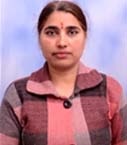A Understanding of Essential Hypertension Through Ayurved

DOI:
https://doi.org/10.54060/a2zjournals.ijahr.29Keywords:
Hypertension, Ayurveda, Avarana, KaphaAbstract
There is no clear mention of hypertension in the Ayurvedic Classics. From an Ayurvedic standpoint, a number of hypotheses have been put up to explain hypertension, but none of them can be officially recognized. By using Dosha, Dushya, and Samprapti, a doctor can attempt to determine the etiology of an illness in cases when the patient's symptoms are unclear, according to Ayurvedic law. According to Ayurveda, the participation of Vata pradhan Tridoshas in vitiated Doshas helps explain hypertension. The functioning of the different srotas of circulation is hampered by the Avarana of Vata Dosha by Pitta and Kapha, which is seen in the Rasa-Rakta Dhatus. Understanding hypertension fully from an Ayurvedic perspective has therefore been our top priority. Thus, in order to aid in both treatment and prevention, an attempt is made here to comprehend hypertension in terms of Ayurveda.
Downloads
References
Ambulkar P, Chand T, Rao S, Dwivedi L. Makardhwaj as a Boon in Hypertension (Vyana Bala Vaishamya): A Clinical Evaluation. In: Proceedings in National Seminar on Preventive Cardiology in Ayurveda. Rashtriya Ayurveda Vidyape-eth Publication, New Delhi, India; 2010. pp. 295-300.
WHO report of Prevention and control for cardiovascular diseases, 2001-2002. Available from: http://www.sld.cu/./pdf/./international cardiovascular disease statistics. Page 2.
Gupta R. Trends in hypertension epidemiology in India. J Hum Hypertension. 2004; 18:73-8.
Charaka Samhita. Reprint edition. Edited by Y. Trikamji. Chaukhamba Sansrit Sansthana, Varanasi; 2009. Sutrasthana, 18/46: pg 108.
Bhela Acharya. Bhela samhita. Edited by G. Suklah. Chaukhambha Bharati Academy; 2006. Pp 284, Page No 36.
Agnivesha, Charaka Samhita. Revised by Charaka and Dridhabala with Dipika commentary of Chakrapanidatta. Edited by Vaidya Jadavaji Trikamaji Acharya. Chaukhamba publications. 5th edition. 2011. Pp 738, Page No 616.
Tripathy Brahmananda, editor. Caraka Samhita of Agnivesha, Charaka Chandrika Hindi commentary. 1st ed. Varanasi: Chaukhamba Orientalia; 1999. p. 558. Chikitsa Sthana; Grahanidosha chikitsa, Chapter-15, Verse 36.
Murthy Srikantha K.R., editor. Asthanga Samgraha of Vagbhata. 9th ed. Chowkhamba orientalia; Varanasi: 2012. p. 368. Sutra Sthana, Doshabhedeeya Adhyaya, Chap 20, Verse 2.
Gordan R, Gwathmey JK, Xie L-H. Autonomic and endocrine control of cardiovascular function. World J Cardiol. 2015;7(4):204e14. https://doi.org/ 10.4330/wjc.v7.i4.204.
Sembulingam, Sembulingam Prema. Properties of cardiac muscle. In: Essentials of medical physiology. 5th ed. New Delhi: Jaypee brothers medical publishers (P)Ltd.; 2010. p. 509.
Agnivesha, Charaka Samhita. Revised by Charaka and Dridhabala with Dipika commentary of Chakrapanidatta. Edited by Vaidya Jadavaji Trikamaji Acharya. Chaukhamba publications. 5th edition. 2009. Cha sha 3/17 Pp 315.
Agnivesha, Charaka Samhita. Revised by Charaka and Dridhabala with Dipika commentary of Chakrapanidatta. Edited by Vaidya Jadavaji Trikamaji Acharya. Chaukhamba publications. 5th edition. 2009. Cha viman 5/15.
Vriddha Vagbhata. Astanga Hridaya with commentaries of Arunadutta and Hemadri. Edited by Bhishagacharya Harisadashivashastri Paradakaravaidya. Chaukhamba publications. 9th edition. 2002. A H su 12/4.
Sushruta. Sushrutha Samhita, Nibandha Samgraha of Sri Dalhanacharya and Nyayachandrika Panjika of Sri Ga-yadasacharya on Nidana Sthana. Edited by Vaidya Jadavji Trikamji Acharya. Chaukhamba publications. 7th edition. 2008. Pp 824, Page No. 67.

Downloads
Published
How to Cite
CITATION COUNT
Issue
Section
License
Copyright (c) 2024 Dr Neha Agrawal Neha

This work is licensed under a Creative Commons Attribution 4.0 International License.























